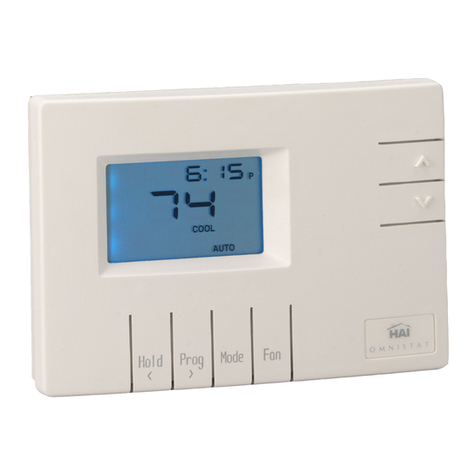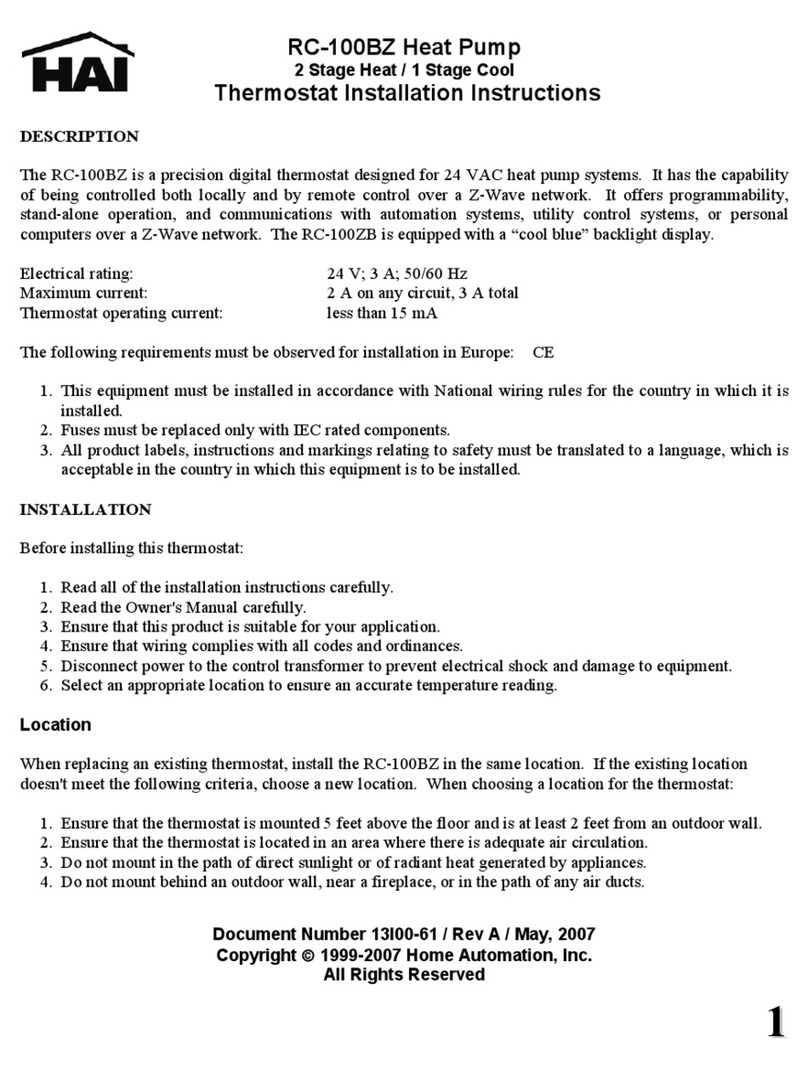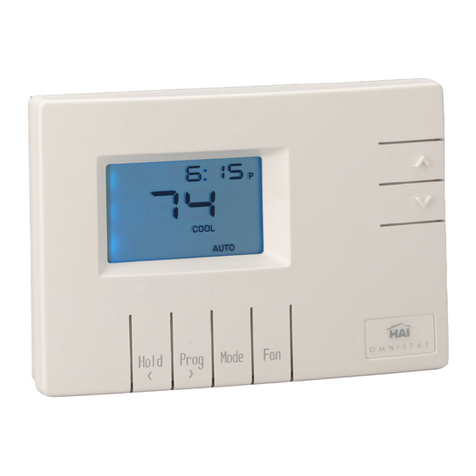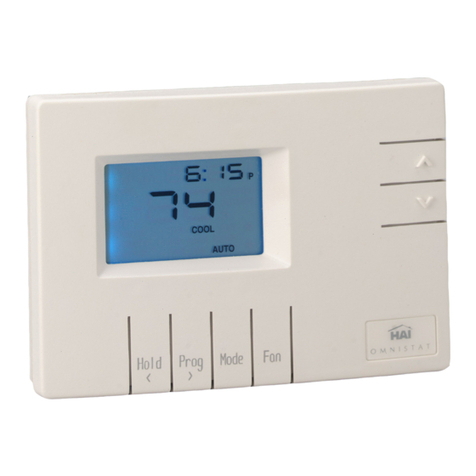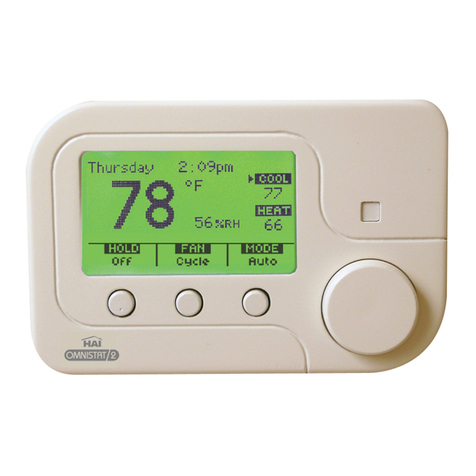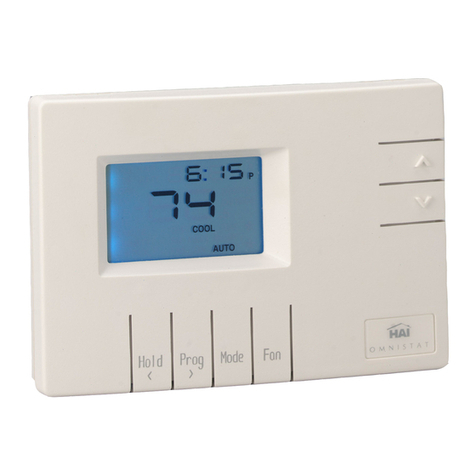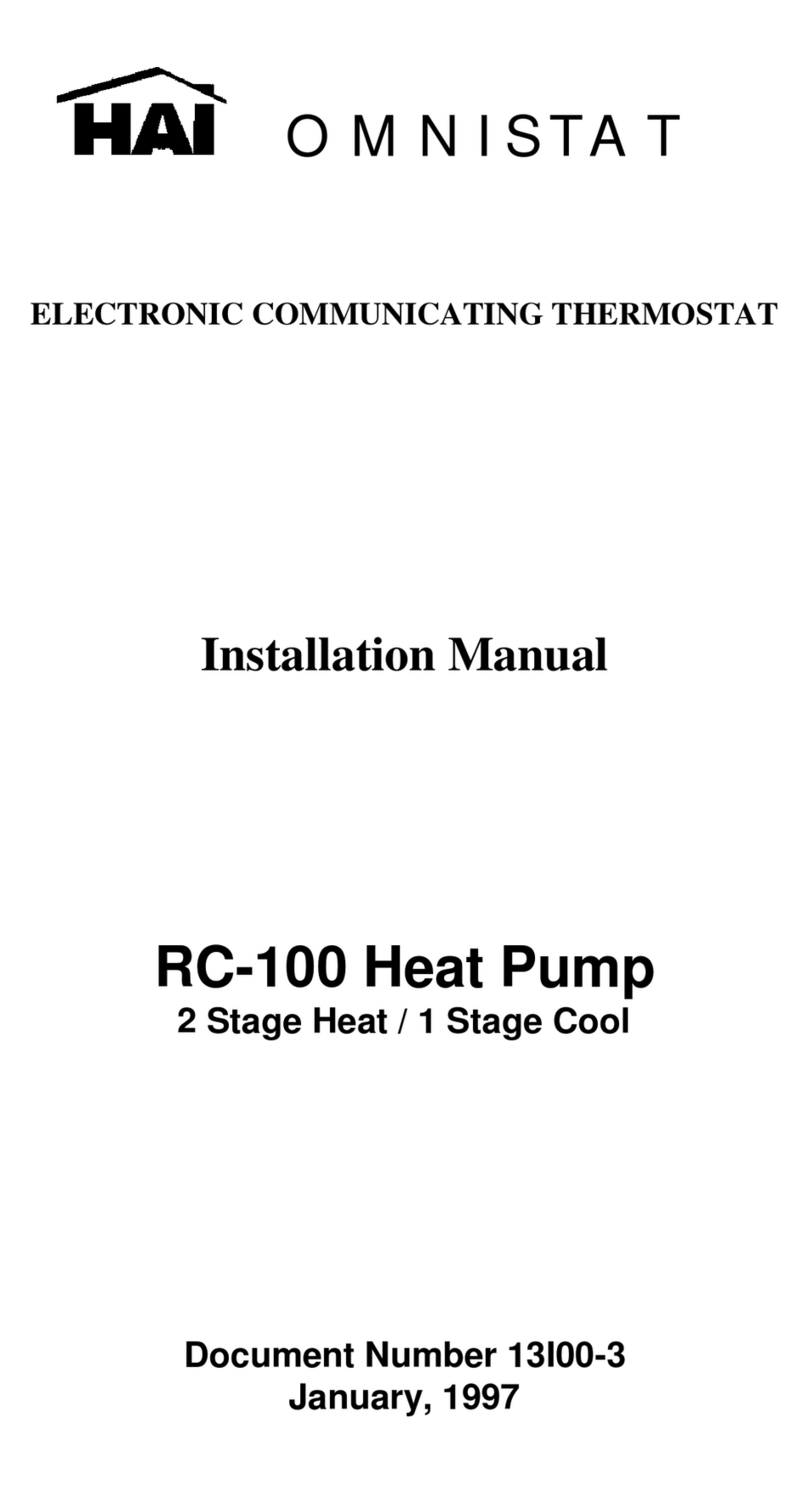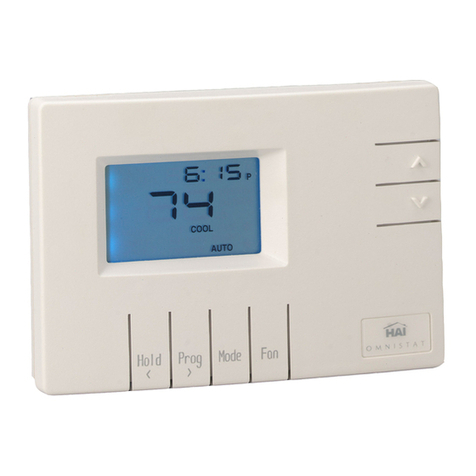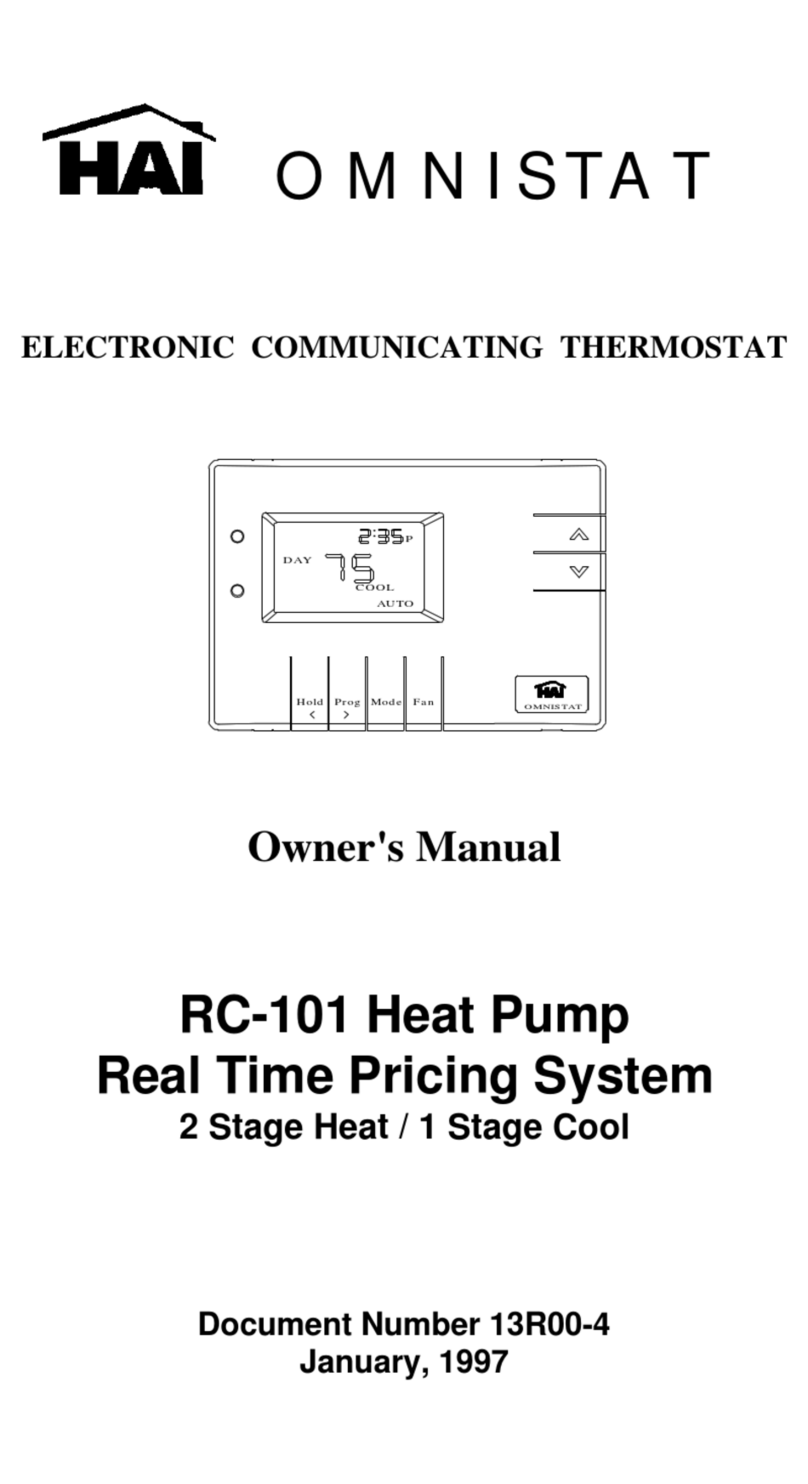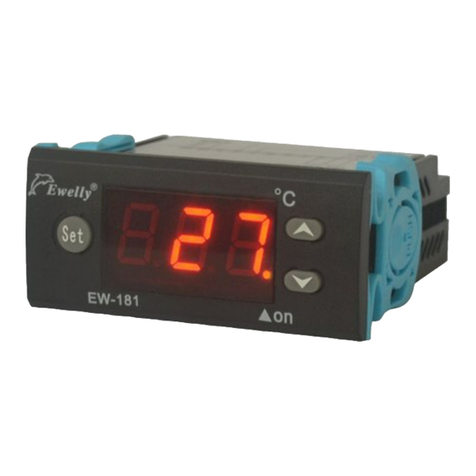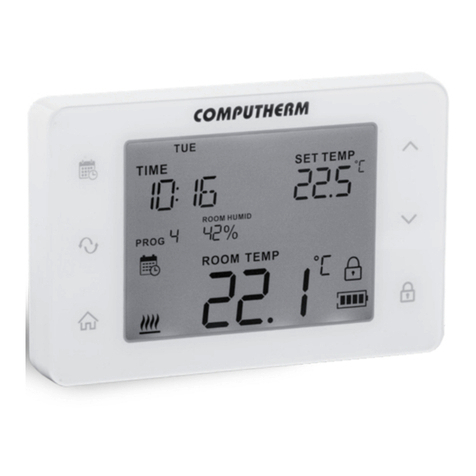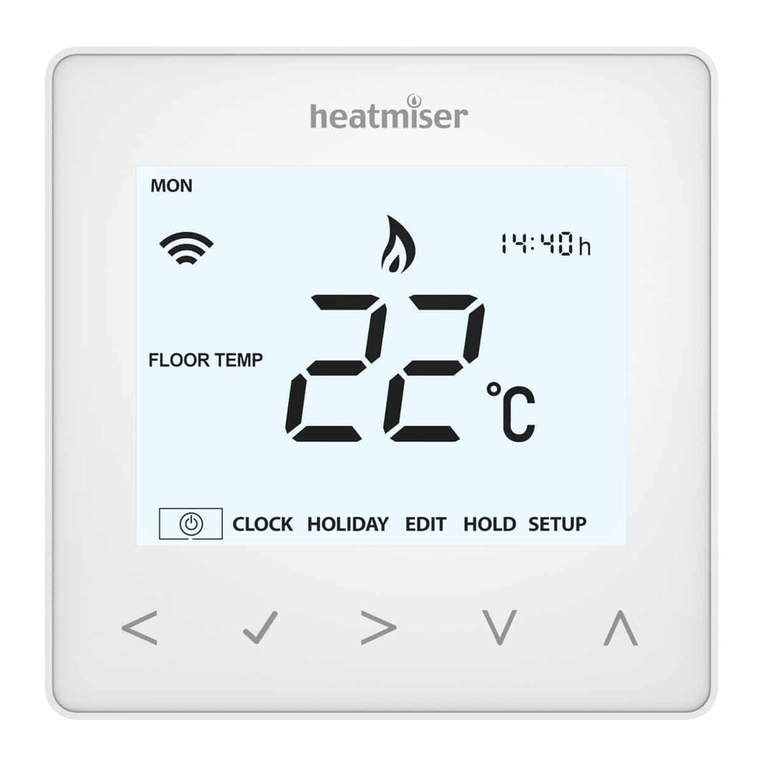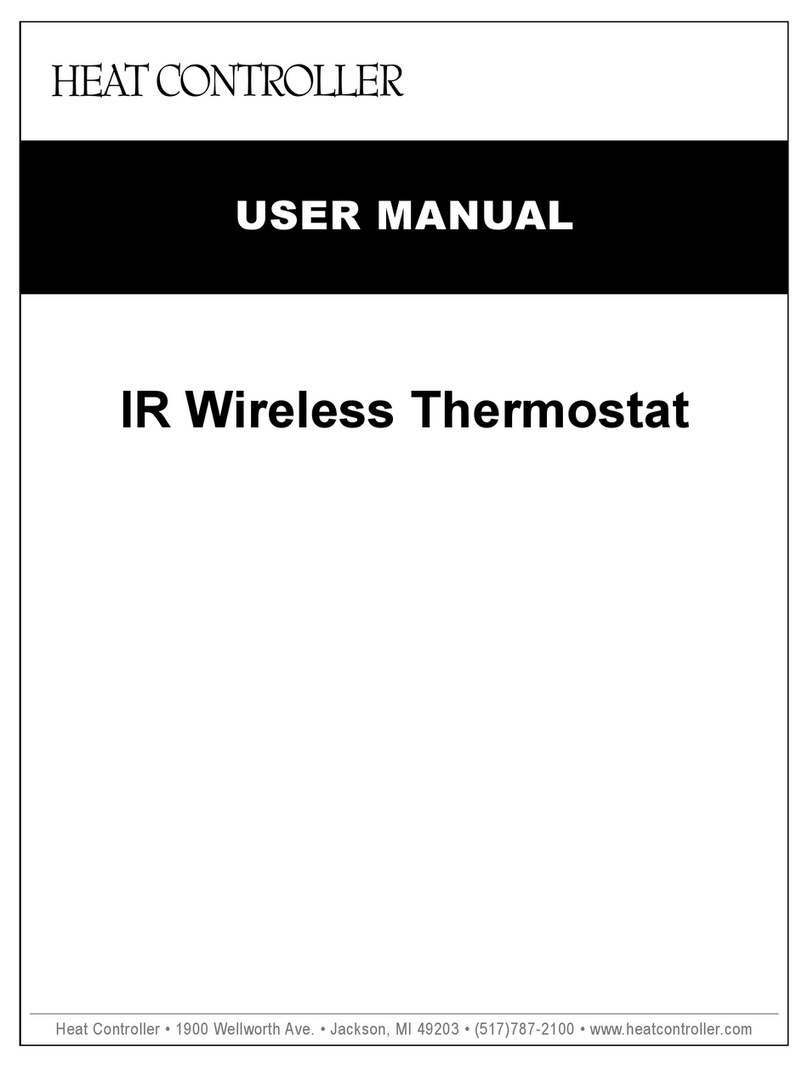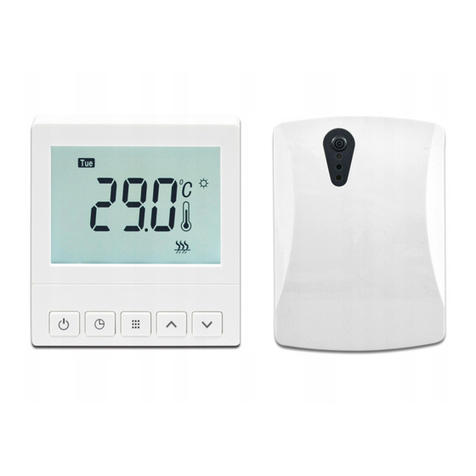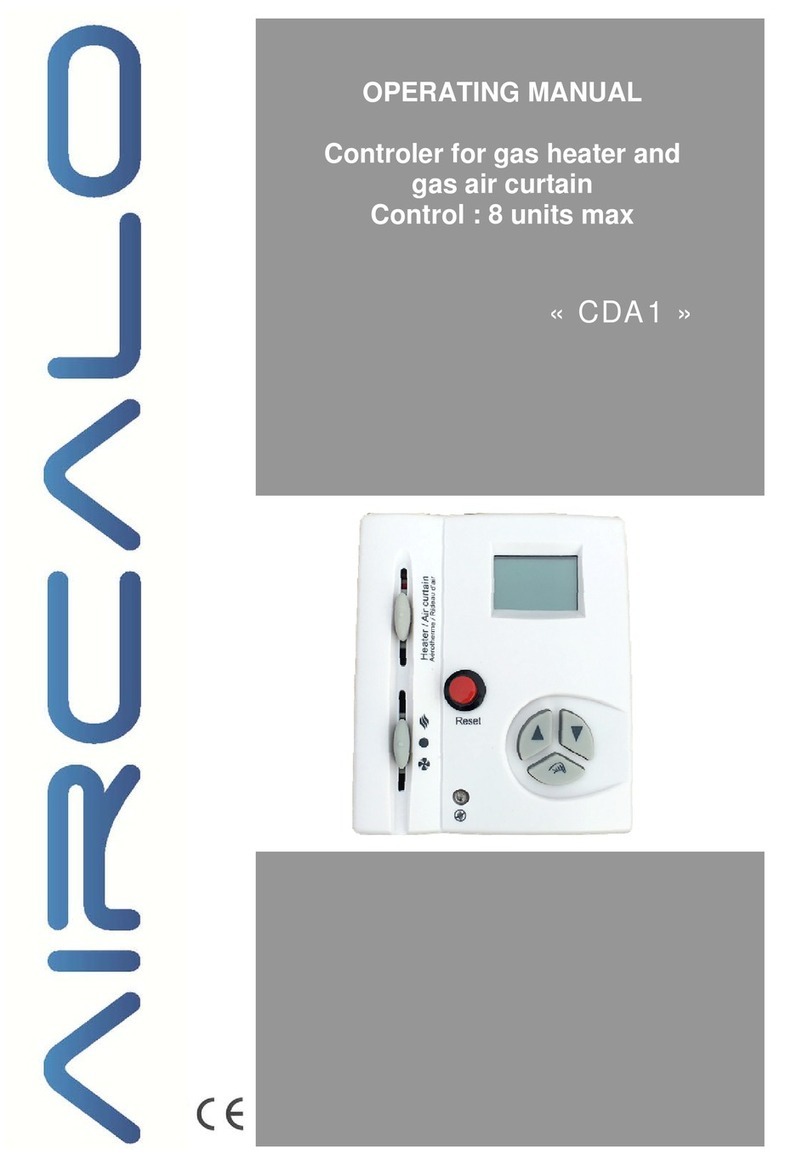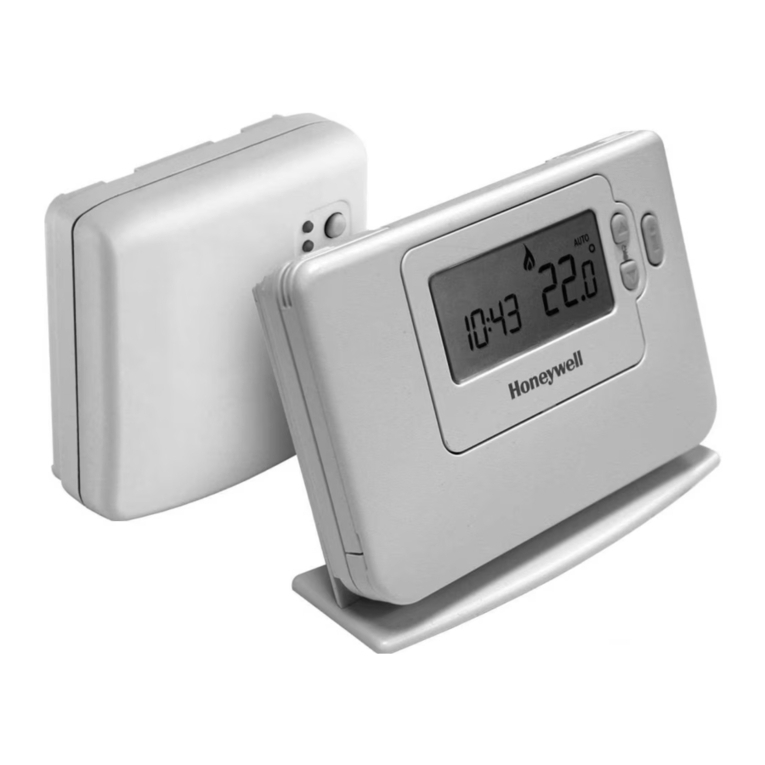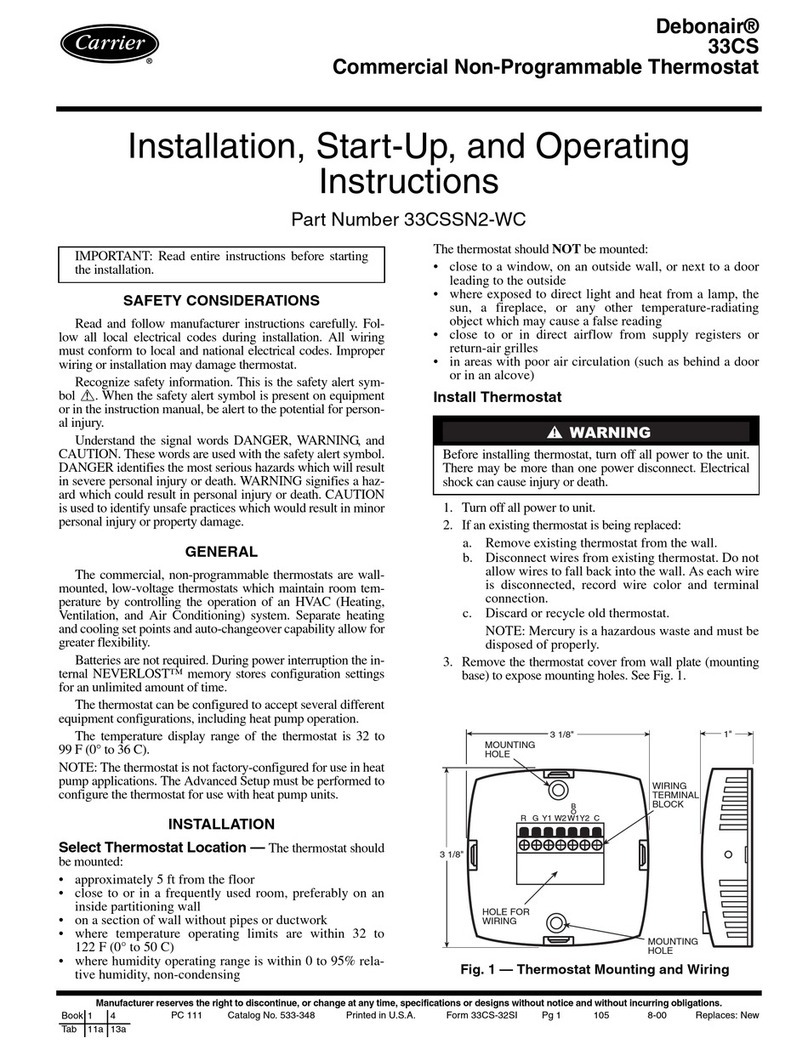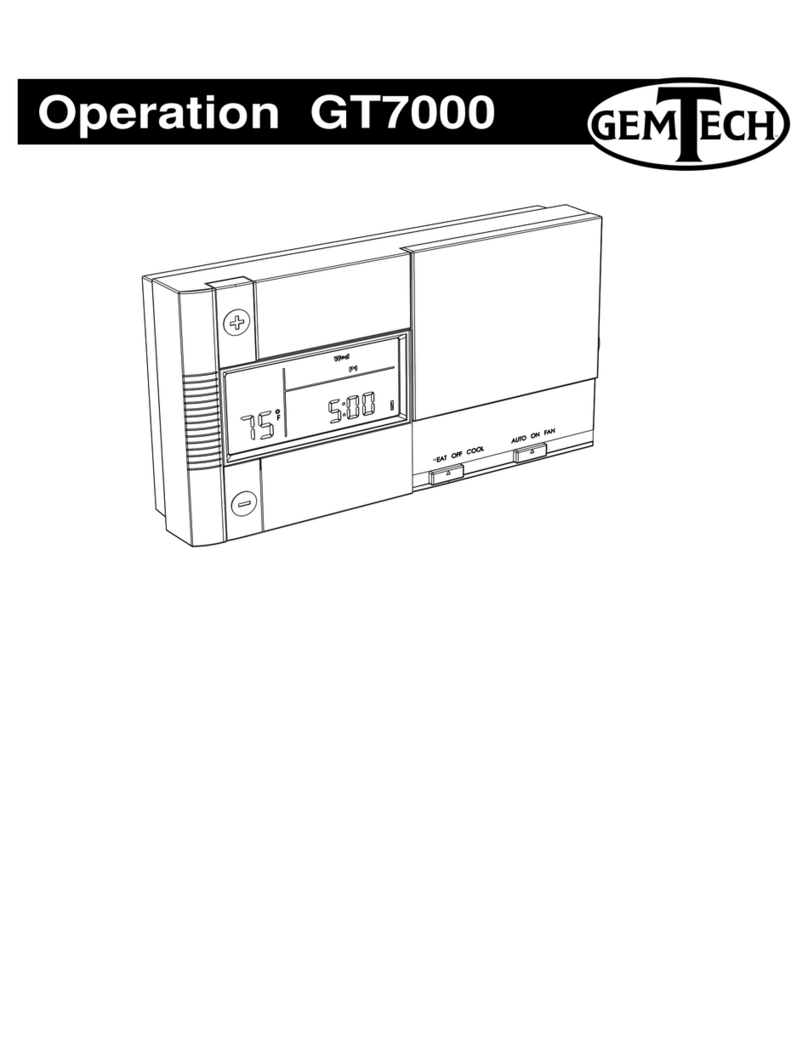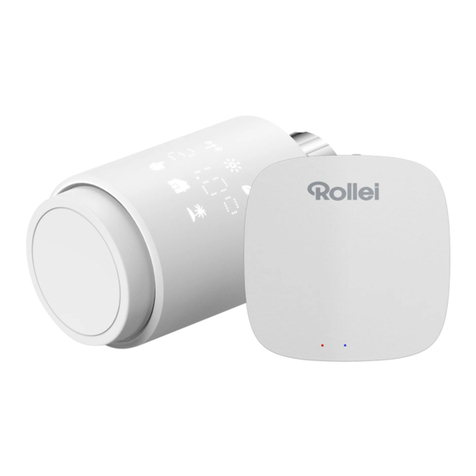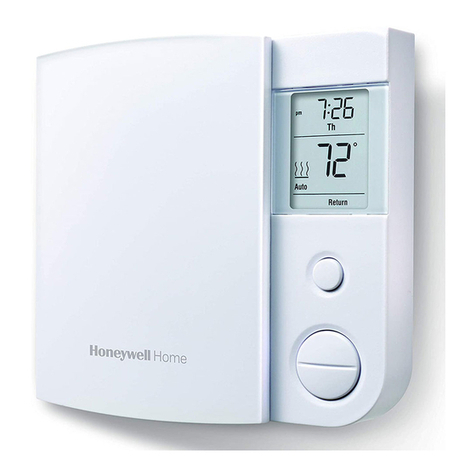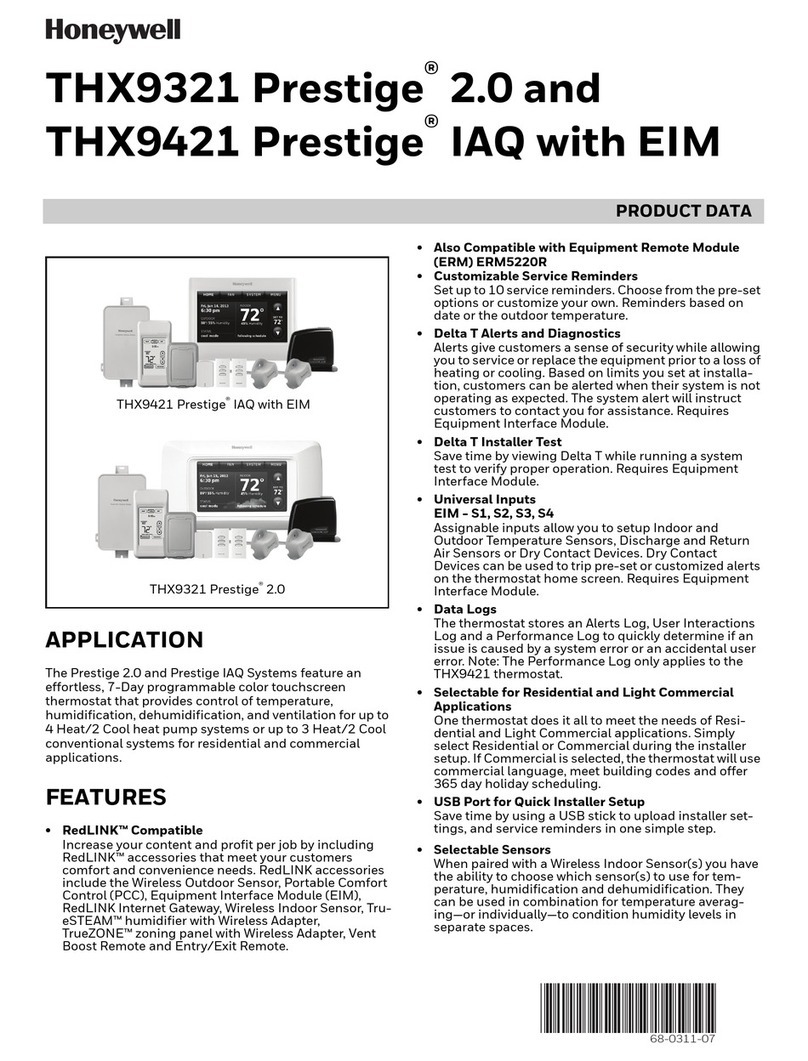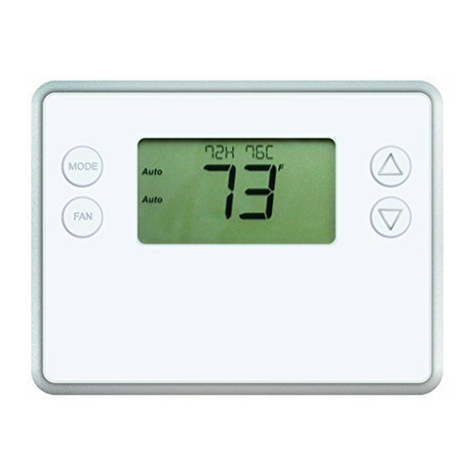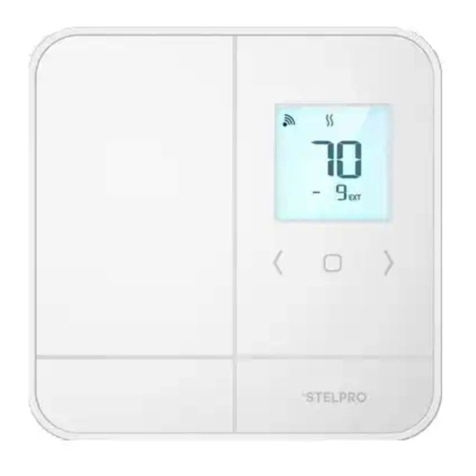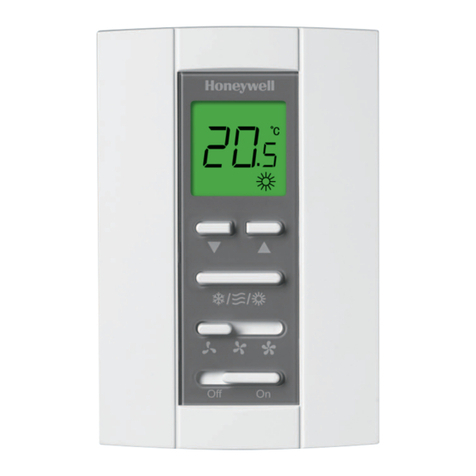1
1
RC-100/ RC-100B Heat Pump
2 Stage Heat / 1 Stage Cool
Thermostat Installation Instructions
DESCRIPTION
The RC-100 is a precision digital thermostat designed for 24 VAC heat pump systems. It has the capability of
being controlled both locally and by remote control. It offers programmability, stand-alone operation, and
robust, optically isolated communications with automation systems, utility control systems, and personal
computers. The RC-100B is equipped with a “cool blue” backlight display.
Electrical rating: 24 V; 3 A; 50/60 Hz
Maximum current: 2 A on any circuit, 3 A total
Thermostat operating current: less than 15 mA
The following requirements must beobserved for installation in Europe: CE
1. This equipment must be installed in accordance with National wiring rules for the country in which it is
installed.
2. Fuses must be replaced only with IEC rated components.
3. All product labels, instructions and markings relating to safety must be translated to a language, which is
acceptable in the country in which this equipment is to be installed.
INSTALLATION
Before installing this thermostat:
1. Read all of the installation instructions carefully.
2. Read the Owner's Manual carefully.
3. Ensure that this product is suitable for your application.
4. Ensure that wiring complies with all codes and ordinances.
5. Disconnect power to the control transformer to prevent electricalshock and damage to equipment.
6. Select an appropriate location to ensure an accurate temperature reading.
Location
When replacing an existing thermostat, install the RC-100 in the same location. If the existing location doesn't
meet the following criteria, choose a new location. When choosing a location for the thermostat:
1. Ensure that the thermostat is mounted 5 feet above the floor and is at least 2 feet from an outdoor wall.
2. Ensure that the thermostat is located in an area where there is adequate air circulation.
3. Do not mount in the pathof direct sunlight or of radiant heat generated by appliances.
4. Do not mount behind an outdoor wall, near a fireplace, or in the path of any air ducts.
Document Number 13I00-3 / Rev B / February, 2004
Copyright
1999-2004 Home Automation, Inc.
All Rights Reserved

